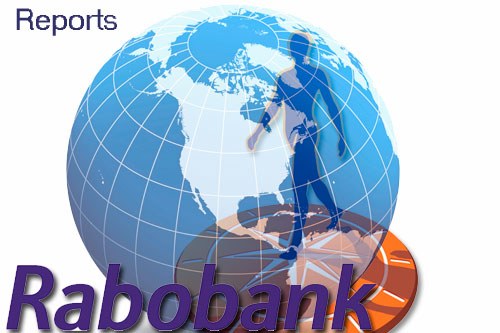Rabobank: Zambia’s dairy potential

Zambia has the natural resources and basic framework necessary to develop the dairy industry, however it does lack infrastructure and efficiency prompting the government to encourage increased investment.
Limiting factors
One of the main limiting factors for Zambia’s dairy industry is the shortage of purebred cows. Currently estimated at about 15,000 with many more needed to accelerate production. Know-how is limited, and disease control measures are weak. The long dry season also provides challenges both to feeding cows and managing heat stress.
Support
Currently, the main support for the industry is at the primary level, from NGOs and development agencies (mainly American or Dutch) that assist smallholder milk producers and have created the framework for a well-organised dairy industry with defined quality standards.
Co-operative ‘unions’ have been providing a framework for small dairy farmers, about half of which have less than five cows. With the farmers delivering their milk on foot or by bicycle, they have been operating with mixed success. The key services they provide are milk collection, testing and chilling – the crucial factor for optimising processing capacity – as well as the provision of dairy stock, veterinary services and inputs and access to financial services.
Larger producers
At the other end of the scale, there are a number of larger producers with herds of more than 200 cows, producing a total of around 35 million litres a year, but the potential for increasing or contributing to large commercial herds appears to be limited.
Opportunities for development could lie in the middle ground, Rabobank suggests in its Milk the Cow that Stands Still report, through supporting emerging dairy farmers with herds of between 10 and 100 cows, where efforts to move milk to processors are still far from successful. There are already around 100 larger emerging farmers with herds of 50 to 200 cows, producing a total of about 2.5 million litres of milk a year, supplying milk to processors through milk collection centres. Another 3,000 have herds of between 10 and 50 cows producing a total 17 million litres.
Processing
One obvious route to increasing production would be through the co-operative structure. Unusually, processing capacity – estimated at about 215 million litres a year by the Dairy Association of Zambia (DAZ) – far exceeds supply, but the key issue is getting the milk to the processors. This is currently hindered by the distance between milk collection centres and the processing plant, and road conditions. Today, processors take only a fifth of total domestic production, although they could take at least 250 million litres. The rest is going into informal markets without processing.
Italian dairy group Parmalat is the country’s largest processor, with installed capacity of 120,000 litres a day, although the company operates at less than 65% of capacity. The second largest, Finta, has equal capacity and uses only a third of it. The scope for filling their plants is considerable.
Growth
With the government keen to stimulate local milk production, imports are prohibited. This leaves local producers, and given training, support, resources and the ability to produce and transport more milk, emerging dairy farmers who are trying to grow their herds up to 100 head or more are seen as the key to growth.
Commercial financial institutions will need to see strict criteria, including a proven track record and proven ability to manage and market the business. Potential threats beyond farmers’ control include poorly defined and adverse government and tax policies, poorly regulated cheap imports that could be exacerbated by greater regional trade harmonisation, and disease outbreaks.
On a more positive note, however, with the support of upstream financing and efforts to manage production costs, there is a dairy deficit in the region that could ultimately lead to opportunities not only within Zambia but in exporting milk and milk products to neighbouring countries such as Zimbabwe, the Democratic Republic of Congo, Botswana and Malawi.











